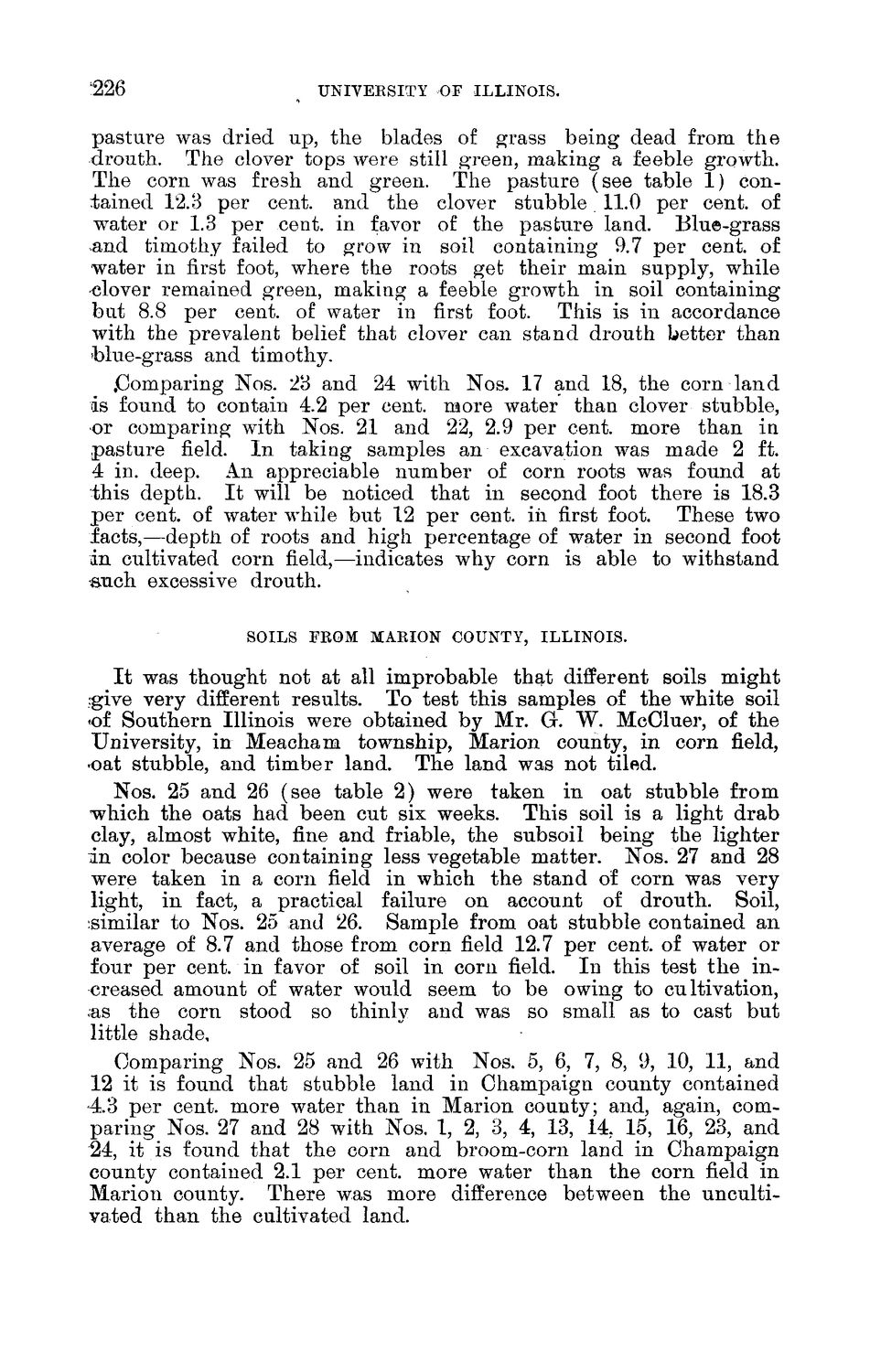| |
| |
Caption: Board of Trustees Minutes - 1888
This is a reduced-resolution page image for fast online browsing.

EXTRACTED TEXT FROM PAGE:
226 UNIVERSITY OF ILLINOIS. pasture was dried up, the blades of grass being dead from the drouth. The clover tops were still green, making a feeble growth. The corn was fresh and green. The pasture (see table 1) contained 12.3 per cent, and the clover stubble 11.0 per cent, of water or 1.3 per cent, in favor of the pasture land. Blue-grass and timothy failed to grow in soil containing 9.7 per cent, of water in first foot, where the roots get their main supply, while -clover remained green, making a feeble growth in soil containing but 8.8 per cent, of water in first foot. This is in accordance with the prevalent belief that clover can stand drouth better than >blue-grass and timothy. .Comparing Nos. 23 and 24 with Nos. 17 and 18, the corn land is found to contain 4 2 per cent, more water than clover stubble, or comparing with Nos. 21 and 22, 2.9 per cent, more than in pasture field. I n taking samples an excavation was made 2 ft. 4 in. deep. An appreciable number of corn roots was found at this depth. I t will be noticed that in second foot there is 18.3 per cent, of water while but 12 per cent, in first foot. These two facts,—depth of roots and high percentage of water in second foot i n cultivated corn field,—indicates why corn is able to withstand auch excessive drouth. SOILS FROM MARION COUNTY, ILLINOIS. I t was thought not at all improbable that different soils might .•give very different results. To test this samples of the white soil of Southern Illinois were obtained by Mr. Gr. W. McOluer, of the University, in Meacham township, Marion county, in corn field, •oat stubble, and timber land. The land was not tiled. Nos. 25 and 26 (see table 2) were taken in oat stubble from -which the oats had been cut six weeks. This soil is a light drab clay, almost white, fine and friable, the subsoil being the lighter i n color because containing less vegetable matter. Nos. 27 and 28 were taken in a corn field in which the stand of corn was very light, in fact, a practical failure on account of drouth. Soil, similar to Nos. 25 and 26. Sample from oat stubble contained an average of 8.7 and those from corn field 12.7 per cent, of water or four per cent, in favor of soil in corn field. In this test the increased amount of water would seem to be owing to cultivation, <as the corn stood so thinly and was so small as to cast but little shade, Comparing Nos. 25 and 26 with Nos. 5, 6, 7, 8, 9, 10, 11, and 12 it is found that stubble land in Champaign county contained 4.3 per cent, more water than in Marion county; and, again, comparing Nos. 27 and 28 with Nos. 1, 2, 3, 4, 13, 14 15, 16, 23, and 24, it is found that the corn and broom-corn land in Champaign county contained 2.1 per cent, more water than the corn field in Marion county. There was more difference between the uncultivated than the cultivated land.
| |